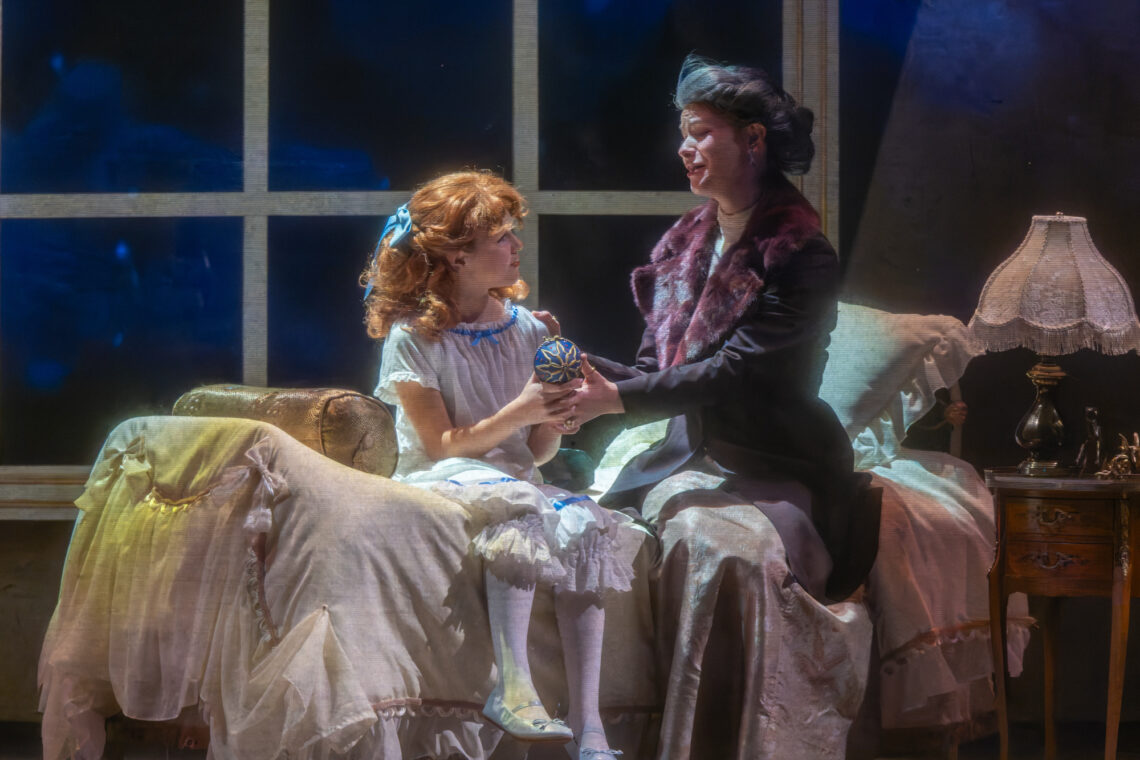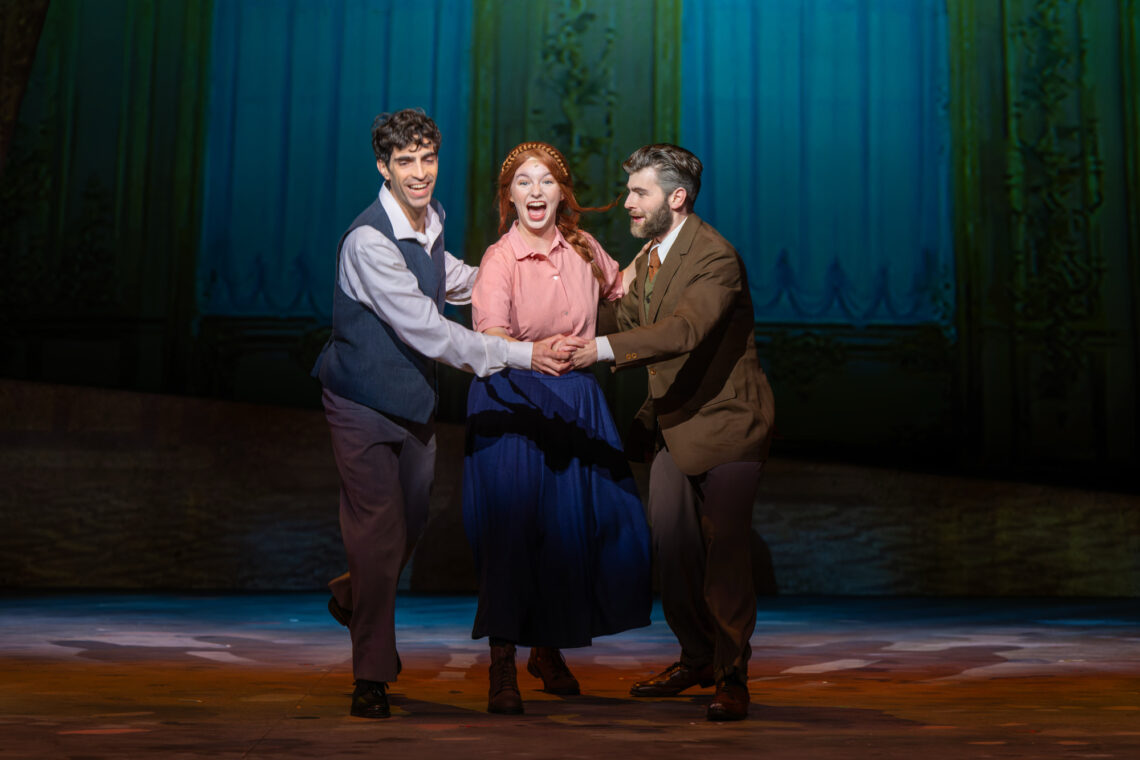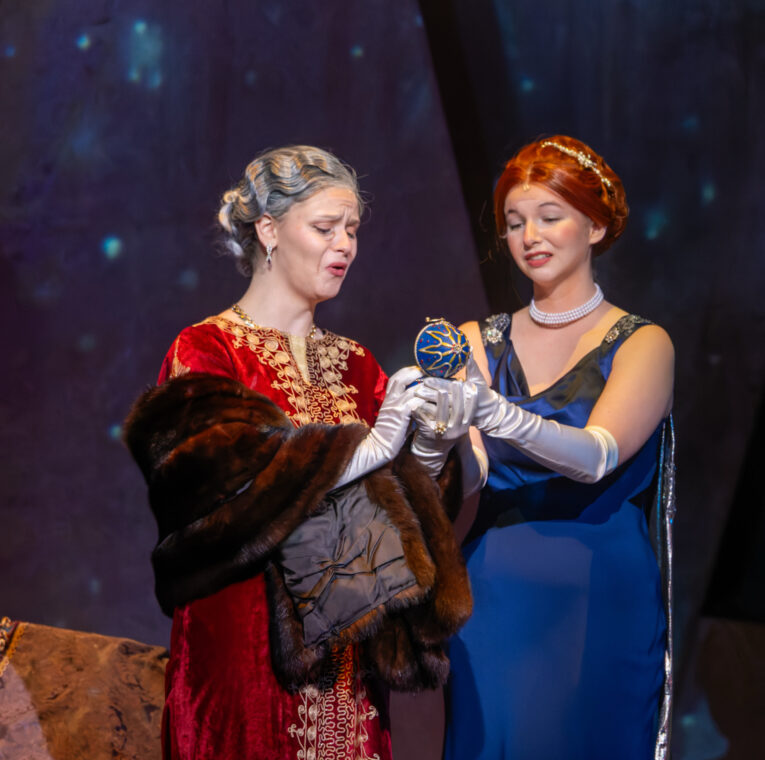The Lyric Theatre's production of "Anastasia: The Musical" is a story with romance and mystery, an appealing score and several big dance numbers. It also is a story of loss, survival and reinvention.
The musical opened on Nov. 11 and will be performed Nov. 13-15 at Krannert Center for the Performing Arts. Set at the end of the Russian empire, during the Bolshevik revolution and in 1920s Paris, it tells the story of a young woman who may or may not be the only surviving member of the Romanovs, the imperial family of Russia.

Director Lara Brooks, a voice professor in the University of Illinois Urbana-Champaign School of Music, grew up watching the 1997 animated film and has loved the story ever since.
"What moves me most about Anastasia is not just its 'what if' mystery but its heart. These characters, whether real or imagined, carry profound trauma, grief and displacement. And yet, they find ways to heal, choose love and forge new lives from the ashes of the old. This is a story about resilience - about hope shining through even the darkest chapters of history," Brooks wrote in her director's note.
The Lyric Theatre program produces at least one dance musical in each class's four years to give students the opportunity to perform in that type of show. "Anastasia: The Musical" is the largest and most contemporary musical the program has produced, Brooks said.

The musical ended its Broadway run in 2018, releasing the rights for other companies to produce it. Many regional and summer stock theaters are producing the musical now, as are high school theater programs, Brooks said. Lyric Theatre students will have the musical in their repertoire when they graduate, giving them a leg up on performing it in a professional setting, she said. The cast learned to dance court waltzes, the Charleston, the tango, the polka and traditional Russian dances.

The musical is challenging in that it has many scene transitions and quick changes for the cast. The transition between scenes often must take place within four bars of music. The ensemble cast members perform between three and five characters each, Brooks said.
"It's an opportunity for the students in the ensemble to play five different characters and learn how they can change their physical and vocal characterizations from one role to another within a short span of time," she said.

The story is based on a real person who claimed she was the lost Grand Duchess Anastasia, said to be the only survivor of the execution of Tsar Nicholas Romanov and his family by the Bolsheviks. There are clues throughout the production that signal that Anya, as the young woman is known in the story, is really Anastasia, although the musical doesn't definitively confirm this. For example, she knows the trick of opening a music box that Romanov gave to his wife. She also knows how to speak French, how to dance and facts about royal life that only someone living that life would know.
Brooks said the production's design also reflects how Anya, who has amnesia, regains her memory over time. Her costumes have a blue color scheme that becomes more intense as she remembers more about her previous life. The colors and costumes shift from dark tones and winter clothing when the characters are in Russia to lighter, brighter tones and spring clothing when they travel to Paris.

In the musical, the Disneyesque villains from the film - Rasputin and his talking bat Bartok - are replaced by Gleb, "this charming, charismatic man who is rising in the ranks of the Bolshevik army," said Brooks, who finds Gleb to be scarier and more unsettling than the film villians.
One of the things she likes best about the story is that Anya must make a choice between living as a princess or a life of her own making. Brooks said her favorite moment in the musical is "Stay, I Pray You," a song several characters sing about leaving their homeland in search of a better life.
"It's a really profound moment," she said. "The story invites us to remember the past as we move through our daily lives and find strength through resilience and love."






